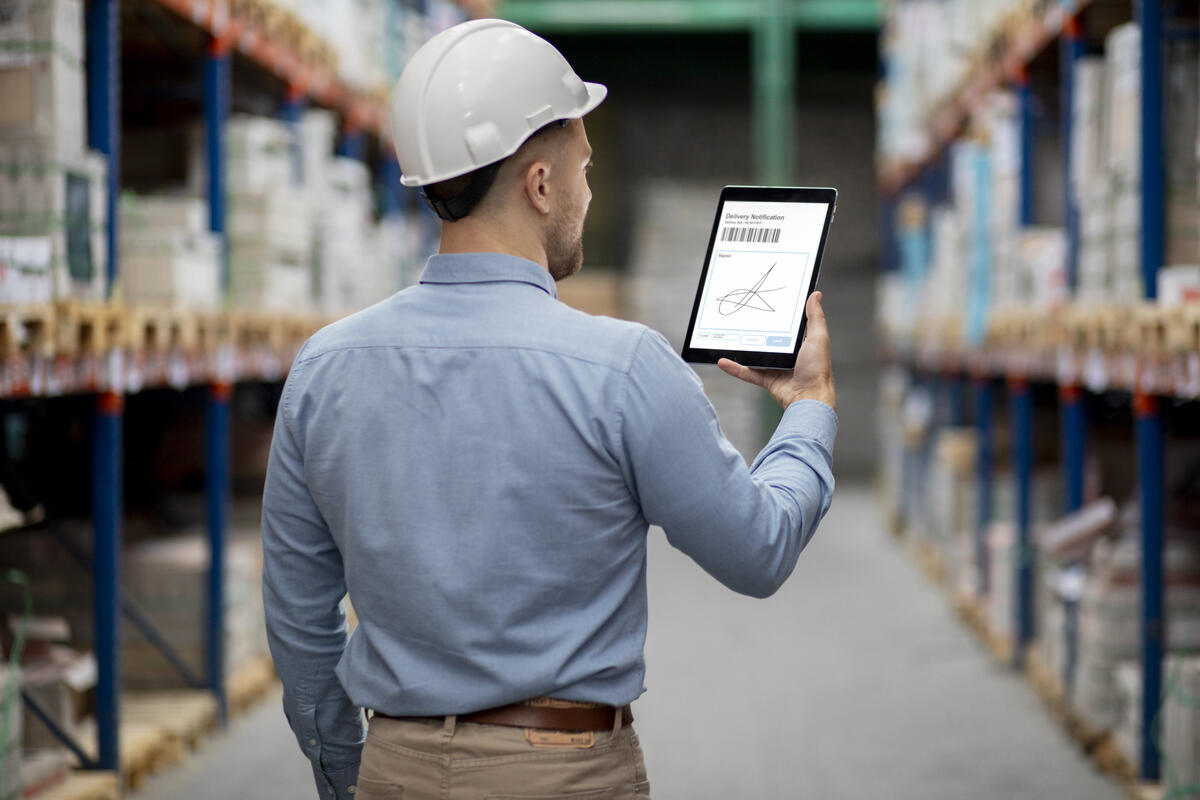Warehouse management in India is undergoing a rapid transformation in 2025, driven by technological advancements, increasing e-commerce demand, and government initiatives. As businesses strive to optimize supply chains, several key trends are shaping the future of warehouse management.
1. Automation and Robotics
Automation and robotics have become integral to modern warehouses. The adoption of Automated Guided Vehicles (AGVs), robotic picking systems, and conveyor automation has significantly increased efficiency and reduced dependency on manual labor. Companies are investing in artificial intelligence (AI) and machine learning to optimize inventory management and enhance operational efficiency.
2. IoT and Smart Warehouses
The Internet of Things (IoT) is revolutionizing warehouse management by enabling real-time tracking of goods and equipment. Smart sensors, RFID tags, and GPS tracking are being used to monitor inventory levels, reduce pilferage, and enhance overall warehouse visibility. These innovations help businesses minimize losses and improve order accuracy.
3. Warehouse Management Systems (WMS) and Cloud Computing
The adoption of advanced Warehouse Management Systems (WMS) integrated with cloud computing is on the rise. Cloud-based WMS solutions provide real-time data access, predictive analytics, and enhanced decision-making capabilities. These systems also support seamless integration with other enterprise resource planning (ERP) tools, improving workflow automation.
4. Sustainability and Green Warehousing
Environmental sustainability is gaining traction in the warehousing sector. Companies are increasingly investing in energy-efficient practices such as solar-powered warehouses, electric forklifts, and eco-friendly packaging solutions. Green warehousing helps businesses reduce their carbon footprint while optimizing energy consumption and operational costs.
5. Drones for Inventory Management
Drones are being utilized for stocktaking and inventory management, reducing the time and labor required for manual audits. Equipped with AI-driven image recognition technology, drones can quickly scan barcodes and RFID tags, ensuring high accuracy in inventory tracking.
6. On-Demand and Multi-Client Warehousing
The concept of shared and on-demand warehousing is becoming popular among businesses looking for flexible storage solutions. Companies can now lease warehouse space as needed, reducing capital investment in large storage facilities. This model benefits small and medium-sized enterprises (SMEs) by offering cost-effective warehousing solutions.
7. Government Policies and Infrastructure Development
The Indian government is actively promoting infrastructure development through initiatives like the National Logistics Policy (NLP) and the Gati Shakti program. These policies focus on improving multimodal logistics, reducing transportation costs, and streamlining warehousing operations. The implementation of GST has also facilitated the establishment of larger, centralized warehouses, replacing smaller regional hubs.
8. Cold Chain Logistics Growth
With increasing demand for pharmaceuticals, perishable food items, and temperature-sensitive goods, cold chain logistics is witnessing significant growth. Companies are investing in advanced refrigeration technologies, real-time temperature monitoring, and specialized cold storage facilities to maintain product integrity.
9. AI-Driven Demand Forecasting
AI-powered predictive analytics is enhancing demand forecasting, enabling warehouses to maintain optimal stock levels. By analyzing historical data, consumer behavior, and market trends, AI helps businesses reduce overstocking and understocking issues, ensuring efficient inventory management.
10. Last-Mile Delivery Optimization
Efficient last-mile delivery is a critical aspect of warehouse management, especially with the rise of e-commerce. Warehouses are strategically locating fulfillment centers closer to urban hubs, leveraging micro-warehousing solutions, and integrating AI-based route optimization for faster deliveries.
Conclusion
The warehouse management sector in India is evolving at a remarkable pace, driven by technological advancements, policy support, and changing consumer expectations. Companies that embrace these trends will gain a competitive edge, ensuring operational efficiency, cost-effectiveness, and improved customer satisfaction in the dynamic logistics landscape of 2025.



